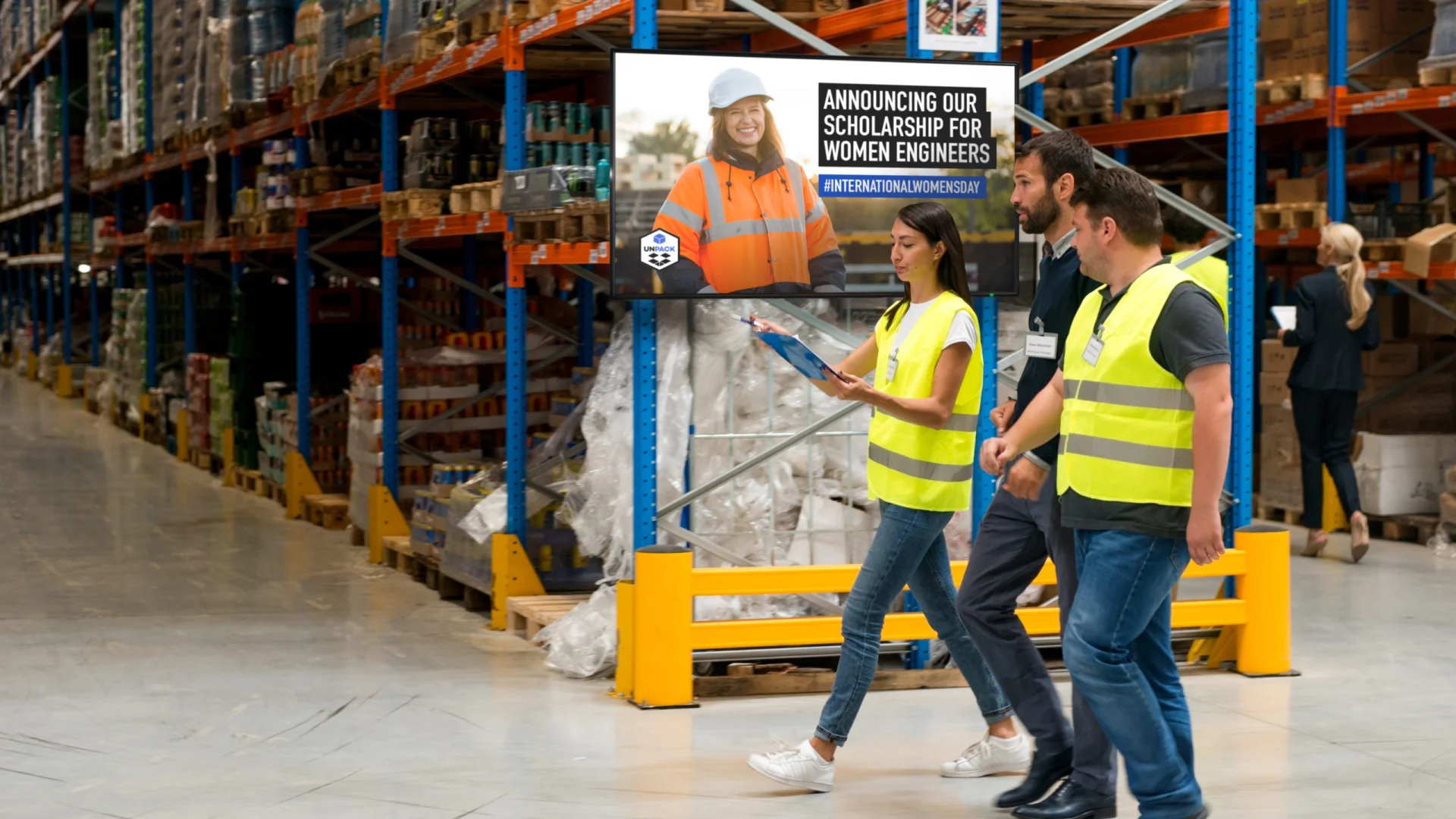
May 19 2023
5 min read


Apr
Running a business is an expensive affair. Besides allocating budgets for manufacturing, marketing, and logistics, you need to spend on storage solutions for inventory. And the rising boom of e-commerce has sparked the need for faster delivery times, putting even more pressure on such warehouse facilities. So, how do we keep up?
Enter smart warehouses. These high-tech storage facilities leverage cutting-edge technologies to manage inventory, streamline operations, and optimize the supply chain. Equipped with digital solutions, they enable real-time product tracking and ensure the smooth movement of goods.
In this article, we’ll delve into exactly what a smart warehouse is and discuss ten digital technologies you can implement if you’re considering building one. Let’s get cracking.
A smart warehouse is a modern goods storage facility that uses digital solutions and automated systems to optimize efficiency, reduce costs and improve safety. Smart warehouses often apply technologies like Artificial Intelligence (AI), digital signage systems, and Augmented Reality to create an Internet of Things (IoT). These include the Internet of Things (IoT), Artificial Intelligence (AI), and robotics.
Imagine walking into a large storage facility that’s kin to something you see in a futuristic sci-fi movie. Robots and drones are whizzing about, ensuring business operations are being executed efficiently and seamlessly. And at the helm of it, all are simple AI algorithms orchestrating every move.
Think about how much you will be able to save in the process. Add to this a reduction in human error, lower risk of injury, and optimization of throughput. Smart warehouses give you all this and more.
For example, you could use robots that zoom down the aisle to pick up a product deftly and place it in a container. Or a drone flying overhead to scan barcodes and track inventory levels. There is so much potential to integrate innovative digital solutions to maximize business efficiency and reduce overhead. In the next section, we will suggest a few popular ones.
Like most good things, your smart warehouse will need investment. And if you’re struggling to provide it, then chances are you’re looking down the wrong rabbit hole. Here are ten affordable solutions you need to have before building a smart warehouse business:
In traditional warehouses, the task of picking items from shelves and preparing them for shipment is left to humans. But smart warehouses have software or hardware systems designed to execute such processes. These tools can easily select specific items from a wide array of options, depending on pre-determined factors. Some standard automated picking tools include:
Pick-to-light systems: Tools that leverage light displays while guiding employees to the location of the desired item.
Voice-directed picking systems: Such solutions require workers to wear headsets so they can be guided with verbal instructions on where to go and which items to pick.
Automated storage and retrieval systems (AS/RS): This technology uses robotics and computer controls to retrieve products from storage locations automatically. These items are then delivered to workers for picking.
Automated guided vehicles (AGVs): AGVs refer to robotic platforms that move autonomously through a warehouse, picking up items and delivering them to workers.
Automated picking tools go a long way to improving warehouse operations’ accuracy, speed, and efficiency. In turn, this results in both cost savings and improved customer satisfaction.
Whether you’re looking to transport goods, pick orders or keep track of inventory, AMRs can help. These mobile robots use sensors to move around the warehouse while avoiding obstacles, making them safe and efficient warehouse management tools. You can program your AMRs to perform tasks or use them as supporting technology to help human workers enhance productivity.

Digital signage is one of the handiest tools to add to your smart warehouse arsenal. They are essentially LED panels that display important information, helping employees keep track of warehouse operations. Here are a few benefits of incorporating digital signage in your smart warehouse:
Access real-time updates on inventory levels: Display live updates on inventory, so workers can keep track of which products are in stock, what needs to be restocked, and what items are running low. This data will help them plan and prioritize, thus reducing the risk of stock-outs.
Send alerts: Notify your workers of upcoming deliveries, inventory issues, or maintenance requirements. With a screen management software, you can make real-time updates, ensuring that employees are always aware of any problems that may affect operations. This is particularly useful for Just-in-Time (JIT) manufacturing plants where inventory issues can directly impact the revenues. The importance of digital signage for JIT manufacturing becomes paramount.
Training and safety information: Ensure your workers are adequately trained, and keep reinforcing critical information like safety instructions, training materials, and reminders.
Productivity metrics: Digital signage can display real-time content like productivity metrics, such as the number of orders picked, packed, and shipped and employee performance.
Wayfinding and directional signage: Display wayfinding and directional signage throughout the warehouse so employees can navigate the facility quickly and easily. This will be beneficial for new hires or temporary staff who still need to become familiar with the layout of the warehouse.
Think of warehouse management systems as the control centers of your storage facilities. They can be integrated with digital solutions like ASRS or AMRs to create a streamlined workflow. With these systems, you can manage inventory management, order processing, and shipping operations. Not only do they provide real-time visibility into inventory levels, but they can also automate tasks like order picking and packing.
A WMS can muster critical warehouse data and store it in one easily accessible platform. This can then be accessed by your employees or even other vendors involved in the supply chain. By classifying data in this way, you can increase the speed of your reporting. And eventually, this results in uber-efficient planning that ensure you’re always a step ahead in the game.
The Internet of Things can significantly impact how you control the moving parts of your warehouse. You can use such sensors to track inventory and monitor the condition of goods in real time. To top it off, they can even detect factors like temperature, humidity, and light levels. This helps you ensure that all goods and products are stored optimally.
And in case of loss or theft, IoT sensors can also track the location of the items in question. Adopting IoT lets you quickly optimize processes so their data lives in one easy-to-access network. And the benefits are multi-fold as well.
From the optimized warehouse, procedures, better labor planning, and enhanced customer experience. It’s also instrumental in reducing risk and avoiding mistakes or accidents that can create losses in the supply chain by early detection.
Smart warehouse solutions are the future of warehouses and the future of better productivity of the warehouse workers. Solutions like digital signage and WMS are the key to managing complex warehouse operations like picking, storage, packing, or shipping.
Need to deploy a digital signage solution for your smart warehouse? Schedule a demo with a Pickcel expert and learn how our screen and content management software can help to streamline operations,improve employ
Take complete control of what you show on your digital signage & how you show it.
Start Free Trial Schedule My Demo
May 19 2023
5 min read

May 16 2023
8 min read

May 12 2023
9 min read

Apr 28 2023
14 min read